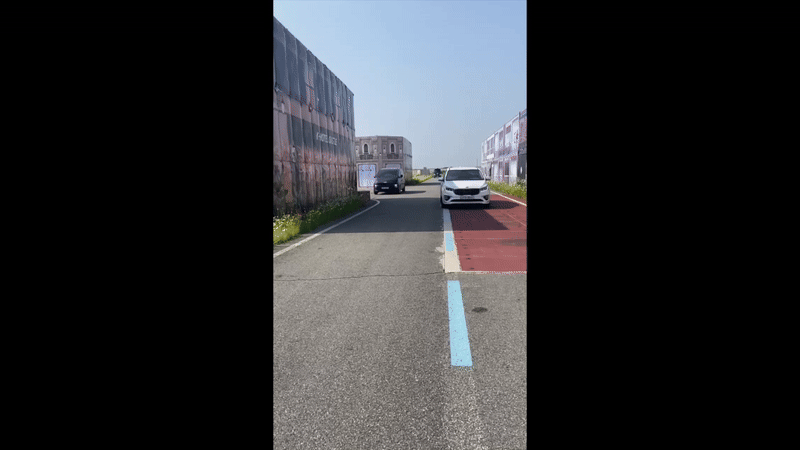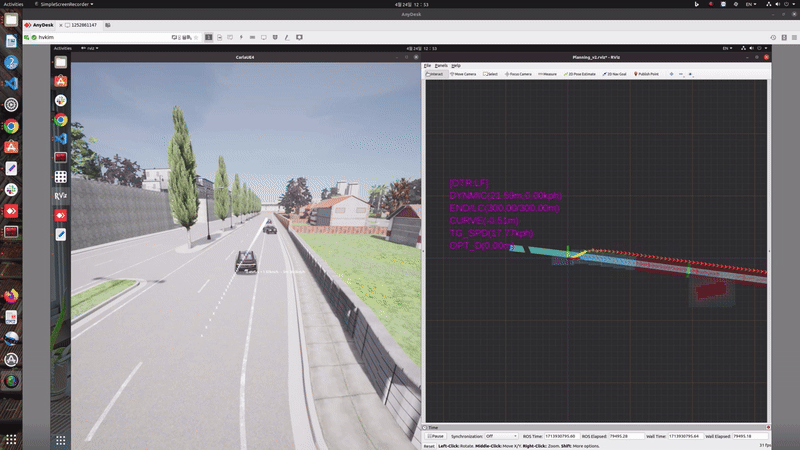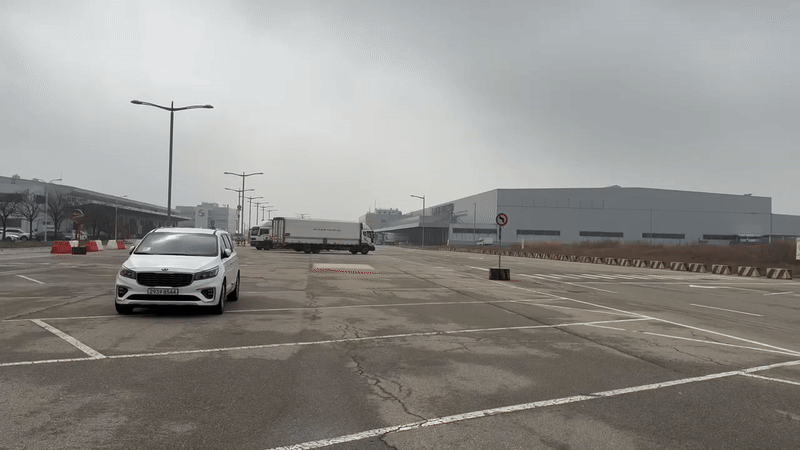Motion Planner for Public Roads and Airport Apron
 Path Planning
Path PlanningAvoiding static obstacles
🧾 Introduction
- In autonomous driving systems, it is essential to implement avoidance behavior for static obstacles.
- Static obstacles refer to non-moving objects such as parked vehicles, median strips, and traffic cones.
- To ensure safety under perception and localization uncertainties, the system was designed to avoid unnecessary reactions while maintaining stable and safe behavior, thereby reducing potential discomfort or risk for passengers.
⚙️ Method
- To generate avoidance paths, we used a quintic polynomial to create a jerk-minimized trajectory.
- To compensate for uncertainties in localization and object detection, we adopted a strategy that alternates between conservative and sensitive decision modes depending on the situation.
✅ Result
- As a result, the system successfully generated stable avoidance trajectories in the presence of various static obstacles.
- Even under sensor uncertainty, the vehicle demonstrated robust and safe behavior during navigation.
- This decision strategy balances caution and responsiveness, allowing the system to remain safely proactive without frequent shifts in behavior, which in turn helps maintain ride comfort and operational stability.
Overtaking Parked Cars
🧾 Introduction
- This task addresses the need for overtaking parked vehicles or static objects that are illegally stopped or obstructing the lane.
- Unlike static obstacle avoidance, this task requires crossing lane boundaries, which introduces additional risk from vehicles approaching from the adjacent lane.
- The goal is to enable safe and smooth overtaking behavior in environments with irregularly parked vehicles or objects.
⚙️ Method
- A classification algorithm was developed to accurately distinguish between regular moving or temporarily stopped vehicles and those that require overtaking.
- Using this algorithm, the system determines whether ovetaking is necessary for obstacle avoidance.
- The jerk-minimized trajectory, generated using a quintic polynomial, was evaluated to determine whether the planned lane departure and reentry would be safe.
- The system continuously monitors the adjacent lane for approaching vehicles in order to plan a safe overtaking decision.
✅ Result
- The system was able to successfully identify and overtake parked vehicles and roadside obstacles.
- It demonstrated the ability to safely merge into and return from adjacent lanes while avoiding conflicts with moving traffic.
- This resulted in robust and stable overtaking behavior, even in complex urban driving scenarios.
Emergent Collision Avoidance
🧾 Introduction
- The Emergent Collision Avoidance (ECA) module is an independent safety mechanism designed to operate when primary autonomous driving modules malfunction or behave abnormally.
- To ensure reliability in emergency scenarios, the ECA minimizes interactions with other modules, operating with autonomous logic when safety thresholds are breached.
⚙️ Method
- The ECA is based on Mobileye’s Responsibility-Sensitive Safety (RSS) framework, which defines provable longitudinal and lateral safety distances.
- It activates only when critical violations of these safety distances occur, prioritizing emergency responsiveness over system coordination.
- Upon detecting a violation, the ECA computes control commands that satisfy the RSS constraints and applies them to override the nominal system.
✅ Result
- The ECA successfully overrode unsafe commands and performed emergency maneuvers such as overtaking when required.
- Its independence allowed it to maintain safety even in cases of system malfunction or planning failure.


